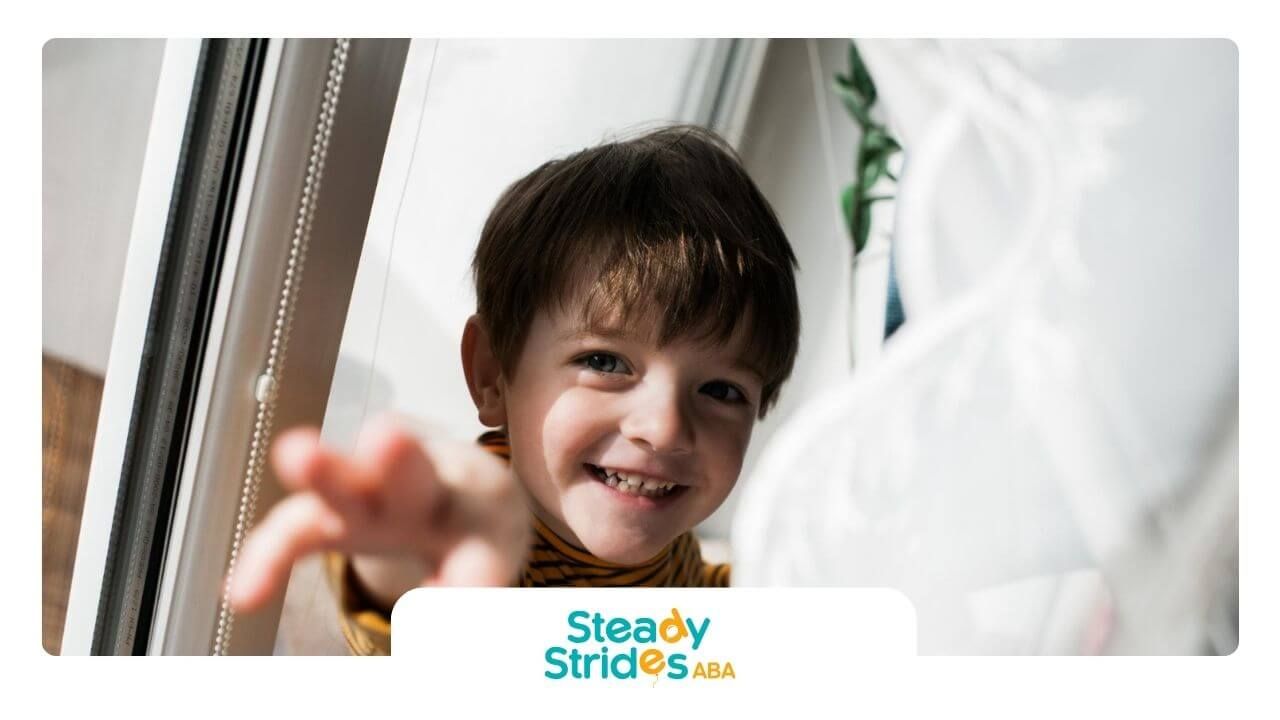Sensory sensitivities—also known as hypersensitivity—are an often-overlooked challenge for individuals with autism. For many, daily life involves navigating a world full of overwhelming sounds, lights, and textures.
As an ABA therapist, I’ve seen how these sensory challenges can affect an individual’s ability to focus, interact, and participate in typical activities.
A few years ago, I provided home-based ABA therapy for a young boy named Alex, who couldn’t tolerate the hum of fluorescent lights. It wasn’t just a minor discomfort—it led to severe anxiety. But with some simple adjustments, like switching to natural light and using noise-canceling headphones, Alex found much-needed relief.
Small changes can make a huge difference in the lives of those with autism.
Why Does Hypersensitivity Happen?
One of the most important aspects of my job is understanding the neurological underpinnings of sensory sensitivities. Research shows that the brains of people with autism process sensory information differently.
For example, studies have found that certain areas of the brain, like the amygdala (responsible for emotions) and the sensory cortices, show heightened activity in response to sensory stimuli. This could explain why a sound that’s barely noticeable to most people might trigger anxiety or distress in someone with autism.
When we understand the neurological factors behind hypersensitivity, we can better support individuals with autism in managing their sensory experiences. Small changes—like dimming lights or using noise-canceling headphones—can go a long way in creating a more comfortable environment for those affected.
What Is Hypersensitivity?
Hypersensitivity, in the context of autism, refers to an exaggerated response to sensory stimuli that others might not even notice. Imagine being in a room with bright lights flickering above you, the hum of a ceiling fan in the background, and the feeling of itchy clothing against your skin.
For a neurotypical person, these might be minor annoyances, but for someone with autism, they can feel unbearable.
As an example, I worked with a child who could not stand the texture of certain fabrics, particularly wool. The sensation of wool against their skin was so overwhelming that it led to a meltdown.
When I learned more about the child’s sensory preferences, I was able to replace wool clothing with smoother fabrics, which helped alleviate some of the distress. It's a small change, but one that made a big difference in the child's overall well-being.
Common Triggers of Hypersensitivity
- Sound Sensitivity: Loud noises or even seemingly harmless background sounds can feel like an assault on the senses.
- Visual Sensitivity: Bright, flickering, or fluorescent lights can cause discomfort, leading some to avoid certain spaces.
- Tactile Sensitivity: Some individuals have an aversion to certain textures, such as rough fabrics or certain types of clothing.
- Taste and Smell Sensitivity: Even the smell of food or a particular flavor might trigger a negative reaction.
Understanding these triggers is essential for creating a supportive environment for those with autism. Sensory profiles, which help identify specific sensitivities, are a great tool for tailoring support strategies.
Signs and Symptoms of Hypersensitivity in Autism
Recognizing hypersensitivity early is crucial for developing effective support systems. The signs can vary widely depending on the individual but may include behaviors like:
- Covering ears or eyes in response to loud sounds or bright lights.
- Stimming (repetitive behaviors like rocking or hand-flapping) as a way to cope with overwhelming stimuli.
- Withdrawal from social situations, avoiding crowded places or events that might be too stimulating.
- Emotional outbursts, like meltdowns, due to sensory overload.
As an ABA therapist, I encourage parents and teachers to pay close attention to these behaviors as early indicators of hypersensitivity. Once identified, we can work together to create strategies that help reduce these sensory stressors.
Types of Sensory Hypersensitivity
Sensory hypersensitivity can manifest in several different forms, and each individual experiences these sensitivities uniquely. As an ABA therapist, I work closely with parents and educators to identify and address these triggers.
Here are some of the most common types of sensory hypersensitivity:
Sound Sensitivity
Loud or unexpected noises—like the vacuum cleaner or a siren—can cause overwhelming anxiety for someone with autism.
A simple solution might be to provide noise-canceling headphones or create a quiet space where they can retreat when the noise becomes too much.
Light Sensitivity
Bright or flickering lights are a common issue, particularly in places with fluorescent lighting. Some individuals may avoid certain rooms or seek out spaces with natural light. Dimmer switches or softer lighting can be a good compromise.
Tactile Sensitivity
Certain textures can be intolerable, ranging from the feel of certain clothing materials to the sensation of hair brushing. Identifying these textures and finding alternatives—like smooth cotton shirts instead of rough fabrics—can help reduce discomfort.
Smell and Taste Sensitivity
Many individuals with autism also experience heightened taste or smell sensitivities. Strong odors or specific flavors may trigger nausea or discomfort. Finding foods that are both nutritionally appropriate and tolerable in texture and flavor is crucial.
Prevalence and Causes of Hypersensitivity in Autism
Hypersensitivity is prevalent in individuals with autism, with studies showing that 50-70% of those with autism experience some form of sensory processing difficulty. This is significantly higher than the general population, where only about 8% report sensory sensitivities.
Why Is Hypersensitivity More Common in Autism?
Researchers suggest that hypersensitivity in autism is linked to differences in brain structure and function. The way the brain processes sensory information is altered, making individuals more likely to experience sensory overload.
According to research from the National Institute of Mental Health (NIMH), these sensory processing differences are linked to autism-related neurological development.
Impact of Hypersensitivity on Daily Life
Hypersensitivity can make everyday activities much more challenging for individuals with autism. The constant need to avoid or manage sensory stimuli can affect school performance, social interactions, and family dynamics.
Hypersensitivity at Home
At home, certain sounds—like a ringing phone or the hum of the dishwasher—can be distressing. Simple modifications, like using earplugs or moving noisy appliances out of shared spaces, can improve comfort levels.
Hypersensitivity at School
Classrooms can be overwhelming due to loud voices, fluorescent lighting, and crowded spaces. Teachers can make changes like offering noise-canceling headphones or creating a quiet corner for students to retreat to when they feel overwhelmed.
Hypersensitivity in the Community
Busy public spaces—like shopping malls or parks—can also be too much to handle. Accommodations like planning quieter outings or offering sensory breaks can help individuals feel more comfortable when out and about.
Strategies for Managing Sensory Hypersensitivity
There are several strategies that can help manage sensory sensitivities. As an ABA therapist, I often work with families to implement a sensory diet, which includes structured activities designed to address sensory needs.
Coping Techniques for Individuals
- Noise-canceling headphones can help reduce sound sensitivity.
- Sensory breaks, such as short moments of calm in a quiet room, can provide relief.
- Mindfulness exercises and visual aids, like schedules or calming images, help individuals stay focused and calm.
Practical Support for Families and Caregivers
Families and caregivers can create environments that help reduce sensory stress. Using tools like visual schedules, providing quiet spaces, and working with occupational therapists to implement individualized strategies can make a big difference in managing hypersensitivity.
Conclusion
Understanding hypersensitivity in autism is critical to improving the quality of life for individuals with autism. By identifying specific sensory sensitivities and implementing effective strategies, we can help those affected navigate the world more comfortably.
Sensory integration therapies, mindfulness, and accommodations at school and in the community can all play a role in supporting individuals with hypersensitivity. Together, we can create a more inclusive world where people with autism feel understood and supported.
At Steady Strides ABA, we specialize in supporting individuals with autism and sensory sensitivities. Our experienced team works closely with families to implement customized ABA therapy services in New Mexico and Texas that help manage sensory overload and improve daily life.
If you’re looking for professional support to help your loved one with hypersensitivity, reach out to us today and discover how we can create a tailored plan to suit their unique needs. Contact us now to start your journey toward a more comfortable and empowered life.
Frequently Asked Questions
What are the most common triggers for hypersensitivity in autism?
Loud noises, bright lights, certain smells, crowded places, and specific textures are all common triggers. However, these can vary from person to person.
Can hypersensitivity in autism change over time?
Yes, hypersensitivity can change as individuals grow. Environmental factors, developmental changes, and new therapies can all influence sensory sensitivities.
Are there therapies specifically designed for sensory hypersensitivity?
Yes, therapies like sensory integration therapy, occupational therapy, and cognitive-behavioral therapy are commonly used to help individuals manage hypersensitivity.
Sources:
- https://www.sciencedirect.com/science/article/abs/pii/S016558762500028X
- https://mecp.springeropen.com/articles/10.1186/s43045-024-00441-6
- https://www.autismspeaks.org/sensory-issues
- https://www.autism.org.uk/advice-and-guidance/topics/sensory-differences/sensory-differences/all-audiences
- https://pmc.ncbi.nlm.nih.gov/articles/PMC8661075/













